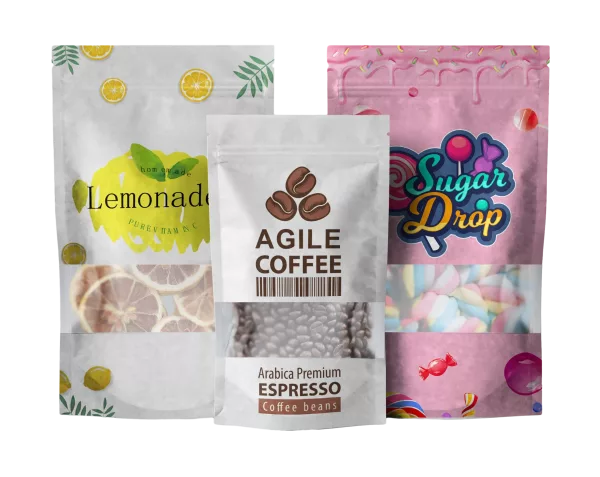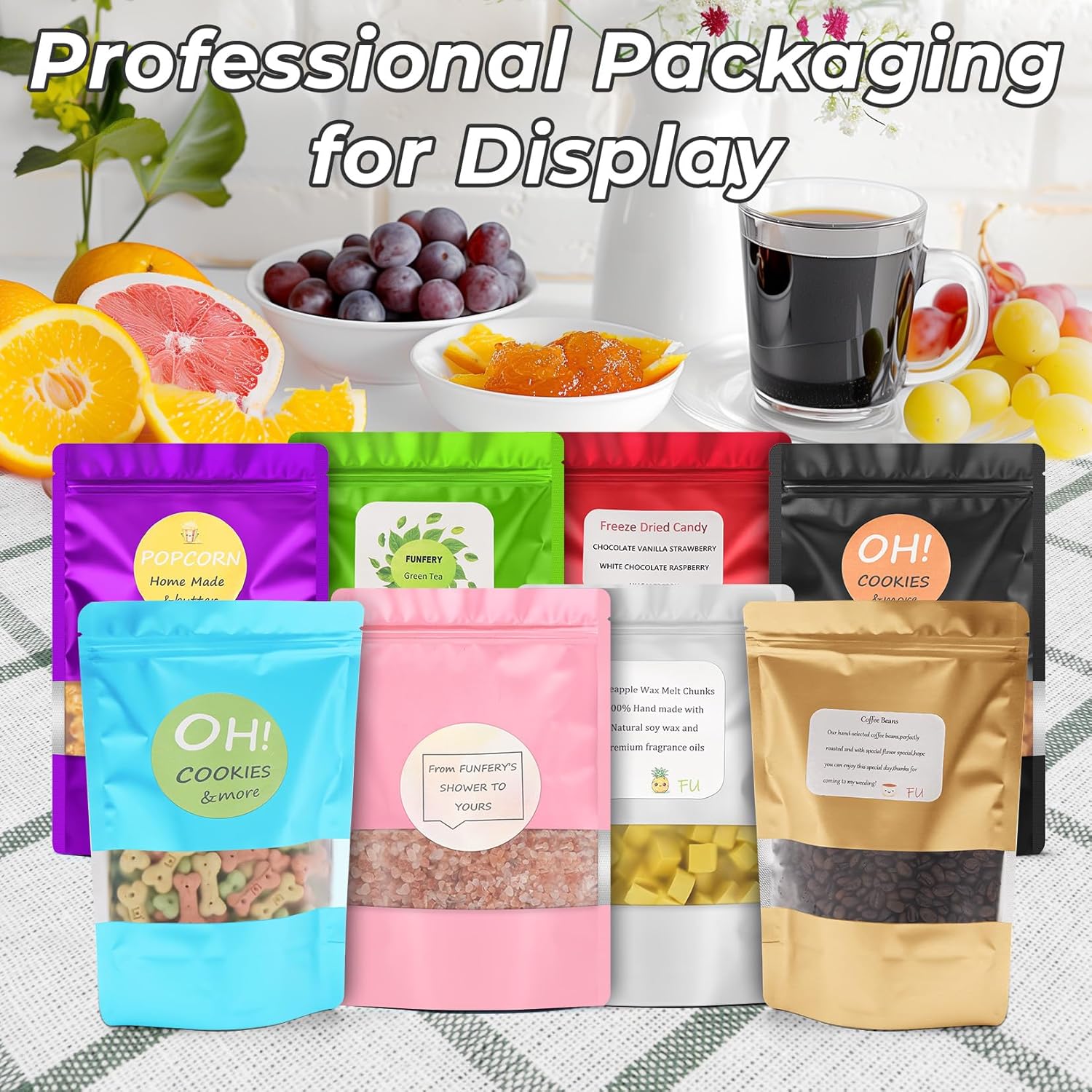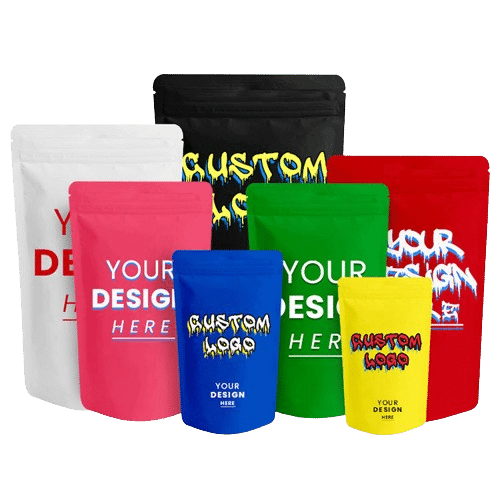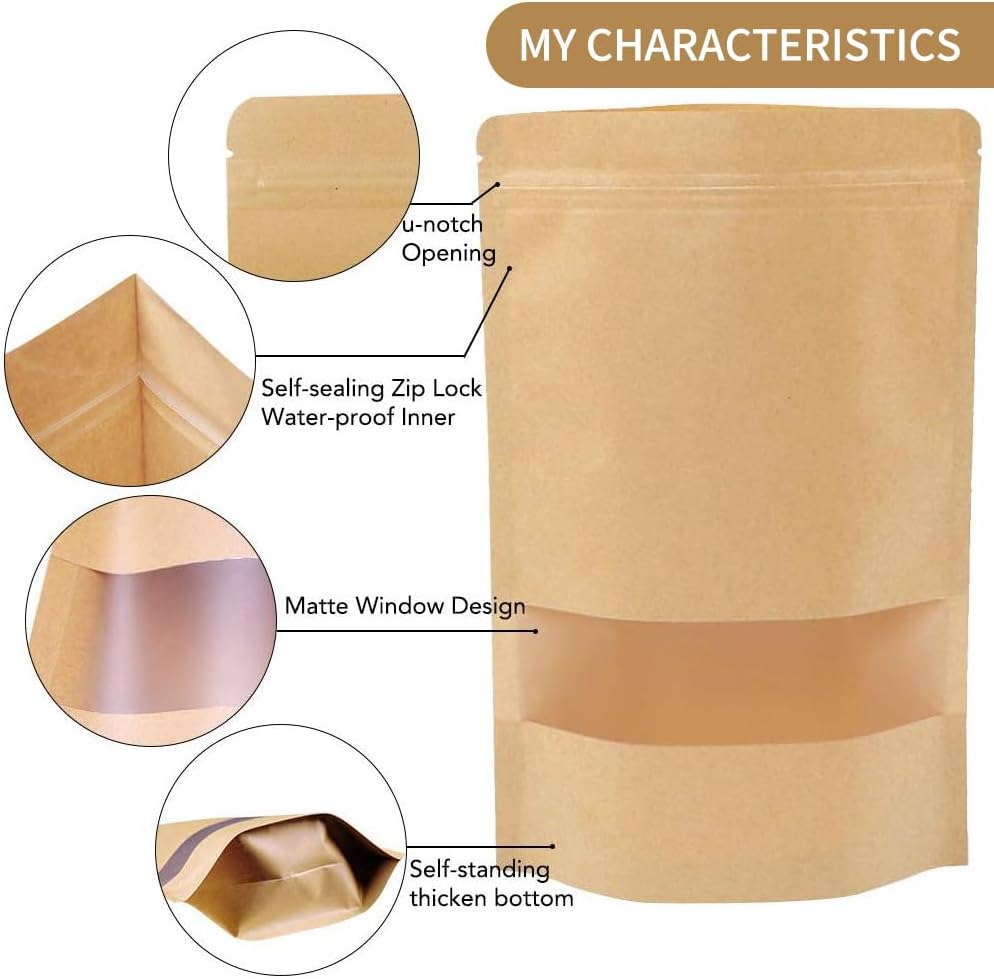Stand up pouches are now incredibly trendy, and everyone is interested in their mechanics, sealing, and sustainability. Everybody wants to know what they are, how to seal them, and whether or not they are part of a sustainable way of living. This article delves into the nitty-gritty of these essentials, answering how stand up pouches work, how best to seal them, and how recyclable they are—peeling away the why and how of this packaging trend.
What Are Stand Up Pouches and How Do They Work?
Stand up pouches are freestanding packets that are flexible, thanks to an ingenious design based on how they are made. They are made of multiple layers—typically polyester, foil, and polyethylene—sealed together in a solid, protective covering. A flat bottom with side gussets keeps them stable, so they can stand neatly on shelves or on a pantry shelf without spilling. This design is not just pleasing to the eye: the layers block air, water, and sunlight from penetrating, keeping contents like snacks, cereals, or spices fresh in mere months.
They function through flexibility. They are lightweight and long-lasting, thus lighter than tin cans or glass containers, reducing transportation and storage issues. Some have zippers for easy openness, others flat tops for closed eternity—both offer content safety from the elements. Imagine a cache of dried fruit or bag of coffee beans: stand up pouches can hold their own as a lightweight, rugged counterpart to their heavy-bulging relatives. They do this by offsetting the virtues of flexing with ones of strength and will mold to whatever you shove into them.

How Do You Seal Stand Up Pouches Securely?
Sealing stand up pouches is the key to locking in freshness, and it’s simpler than it seems with the right technique. The method hinges on the pouch type—zipper or heat-seal—but both deliver a tight finish when done right.
For zipper pouches, it’s straightforward: fill to about 75% capacity, then press the tracks together firmly until they snap shut. Run your fingers along the seal to catch any gaps—airtightness is the goal.
Heat-seal pouches are more of a hassle but are worthwhile in terms of durability. Fill, leaving headspace, and heat-seal with a handheld heat sealer, or a home flat iron set at medium heat. Press top edge for 3-5 seconds, moving slowly to fuse the inner layers together; allow it to cool, then pull carefully to test. Too little heat makes weak points, and excess can destroy the pouch, so a quick rehearsal test is well worth it. For snacks or bulk foods, a good seal prevents contents from being spoiled and keeps them shelf-stable, making pouches reliable storage winners.
Are Stand Up Pouches Eco-Friendly or Recyclable
The eco-friendliness of stand up pouches is controversial—and the answer isn’t black and white. Their multi-layer design, while aces at protecting against damage, is a recycling challenge. Mixing plastics with foil or metalized films renders them incompatible with regular curbside programs—special facilities are needed to sort out the layers. Without access to those, many wind up in landfills, a disadvantage for bulk buyers or environmentally aware consumers.
But there’s hope. A few stand-up pouches are constructed with recycling in mind, using single materials like all-polyethylene that curbside systems can process—find a “recyclable” label. Multi-layer types are covered by store drop-off points or mail-in programs, gathering clean, residue-free pouches for advanced recycling. Reuse is another tactic: clean pouches can serve to store non-food items like craft supplies, keeping them alive for longer. They’re not necessarily eco-destructive—going for recyclable versions and appropriating disposal makes them a more environmentally friendly choice than they initially appear.
Tying It Together: Practicality Meets Purpose
Stand up pouches are tops in their mechanics: layered strength and a durable bottom make them storehouse workhorses. Sealing them—zipper or heat—locks that strength in, keeping food or products fresh. Their eco-story is varied, but recyclable material and resourceful reuse direct them toward the sustainable. They are a fusion of function and adaptability, primed for pantries, stores, or shipping—just seal them well and plan for their demise.
Stand Up Pouches in Action
Imagine a specialty coffee roaster using heat-sealed pouches to keep beans fresh, or a domestic cook closing off spices for convenient grabs. Recycling pouches meet a zero-waste goal, or reused ones keep tidy scraps and ends. They’re engineered to protect and adapt, giving back to storage needs with regard to utility—and, with care, the earth as well.







